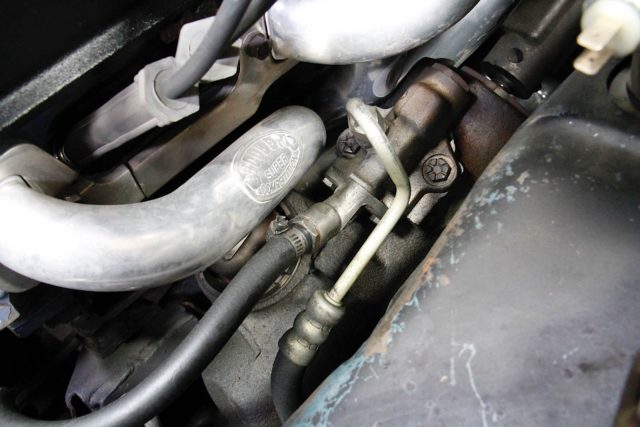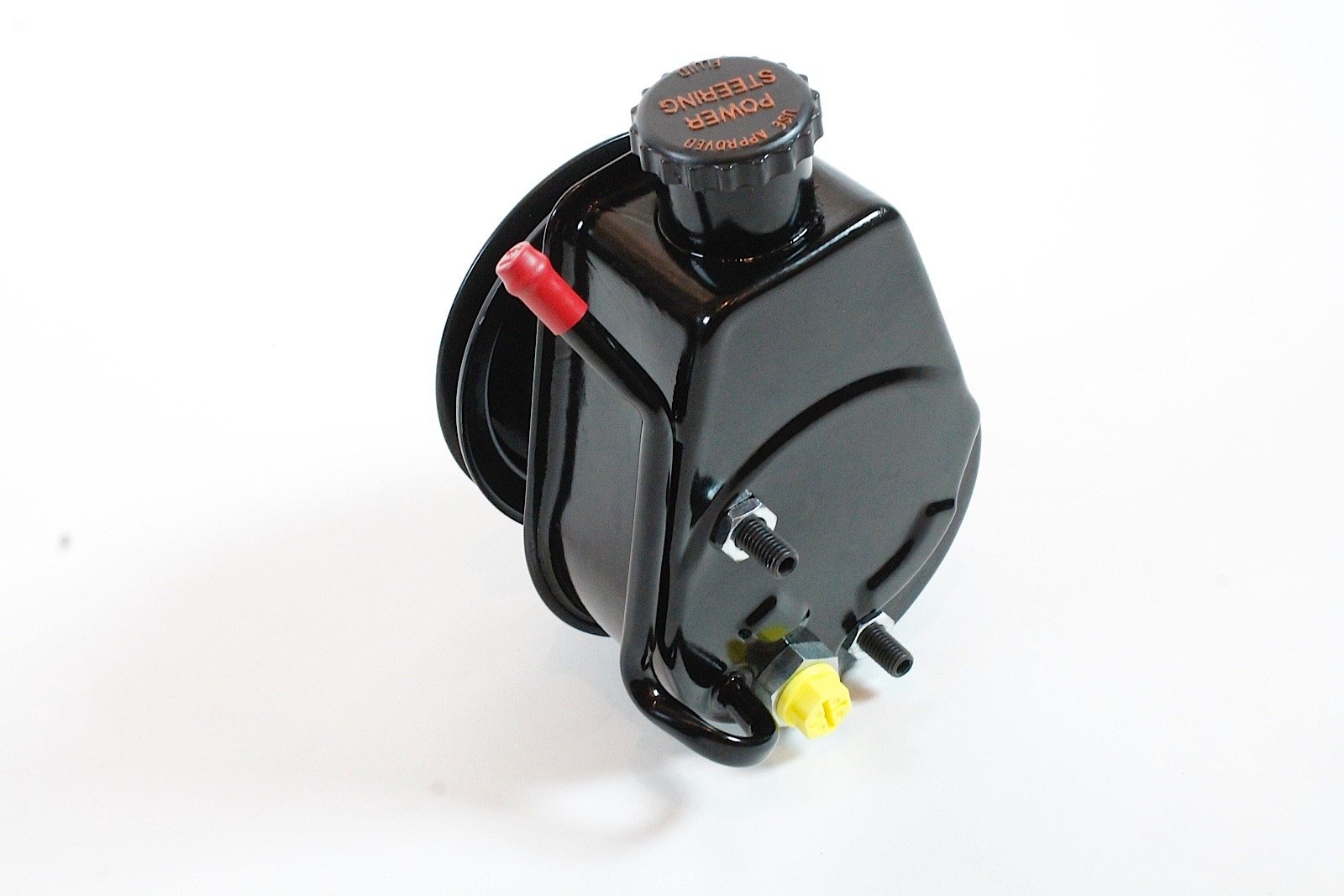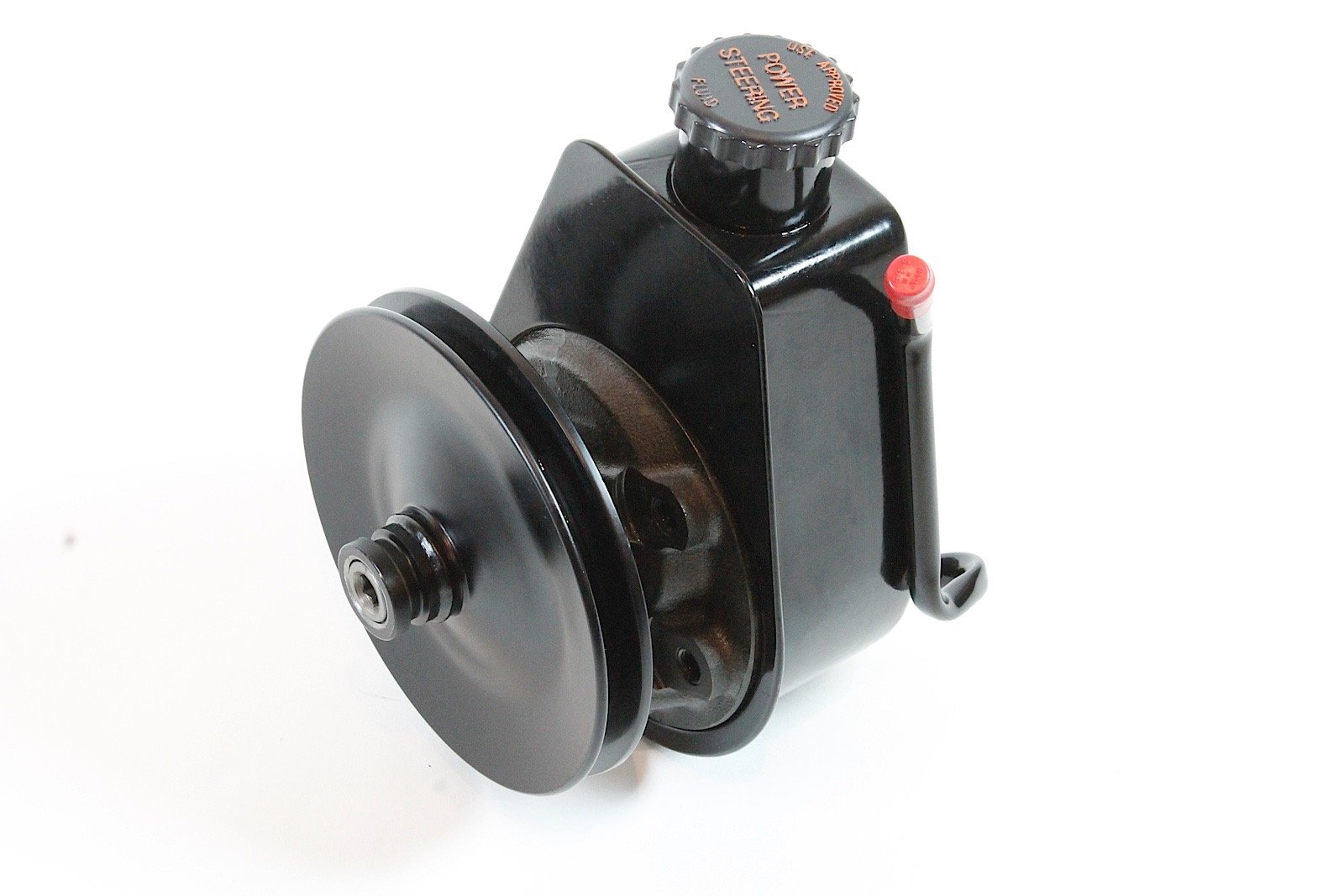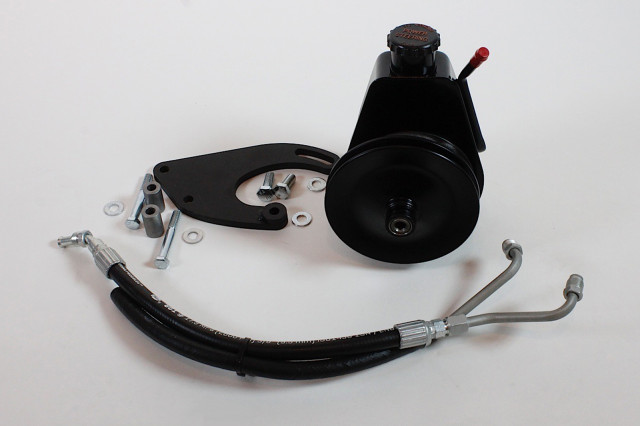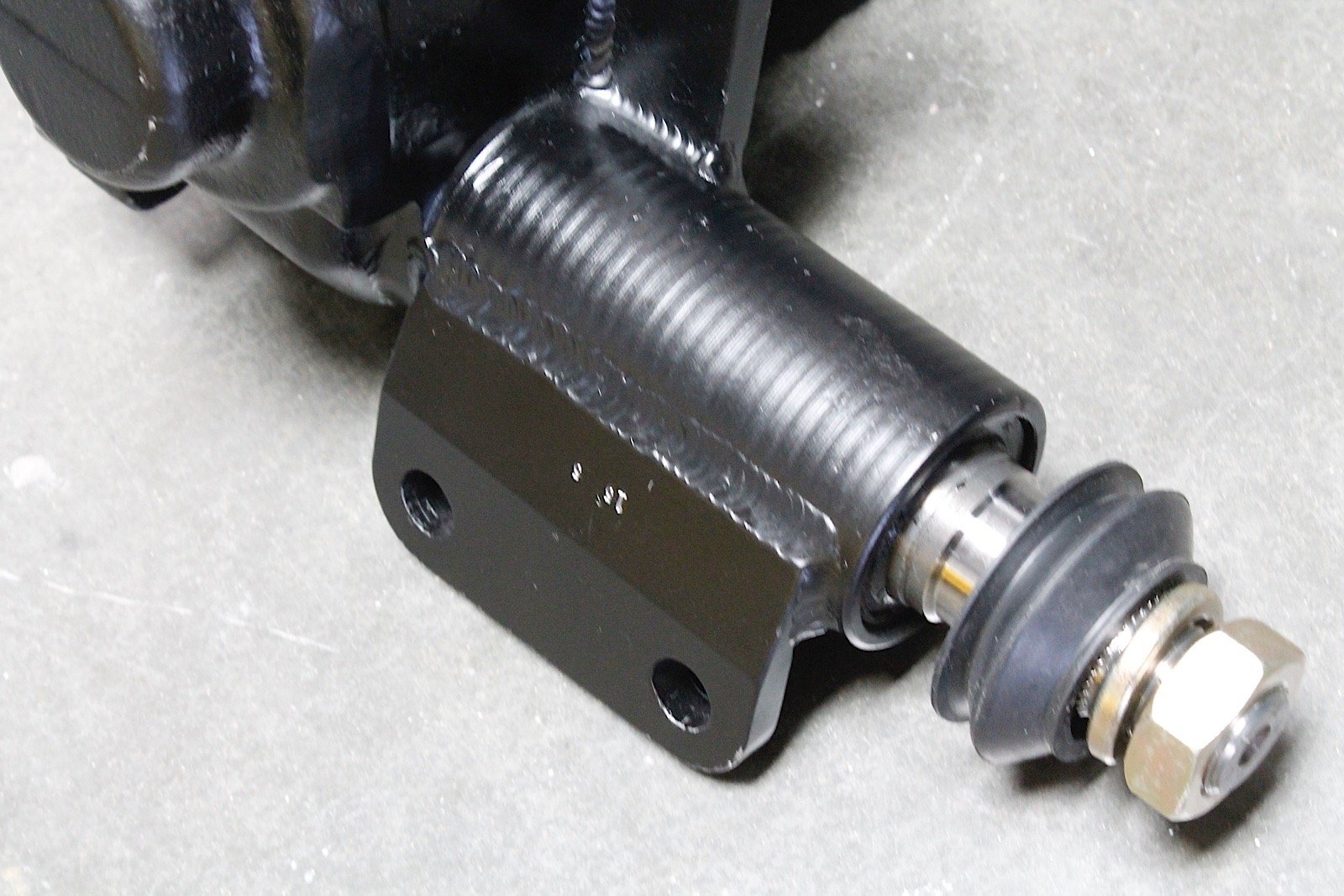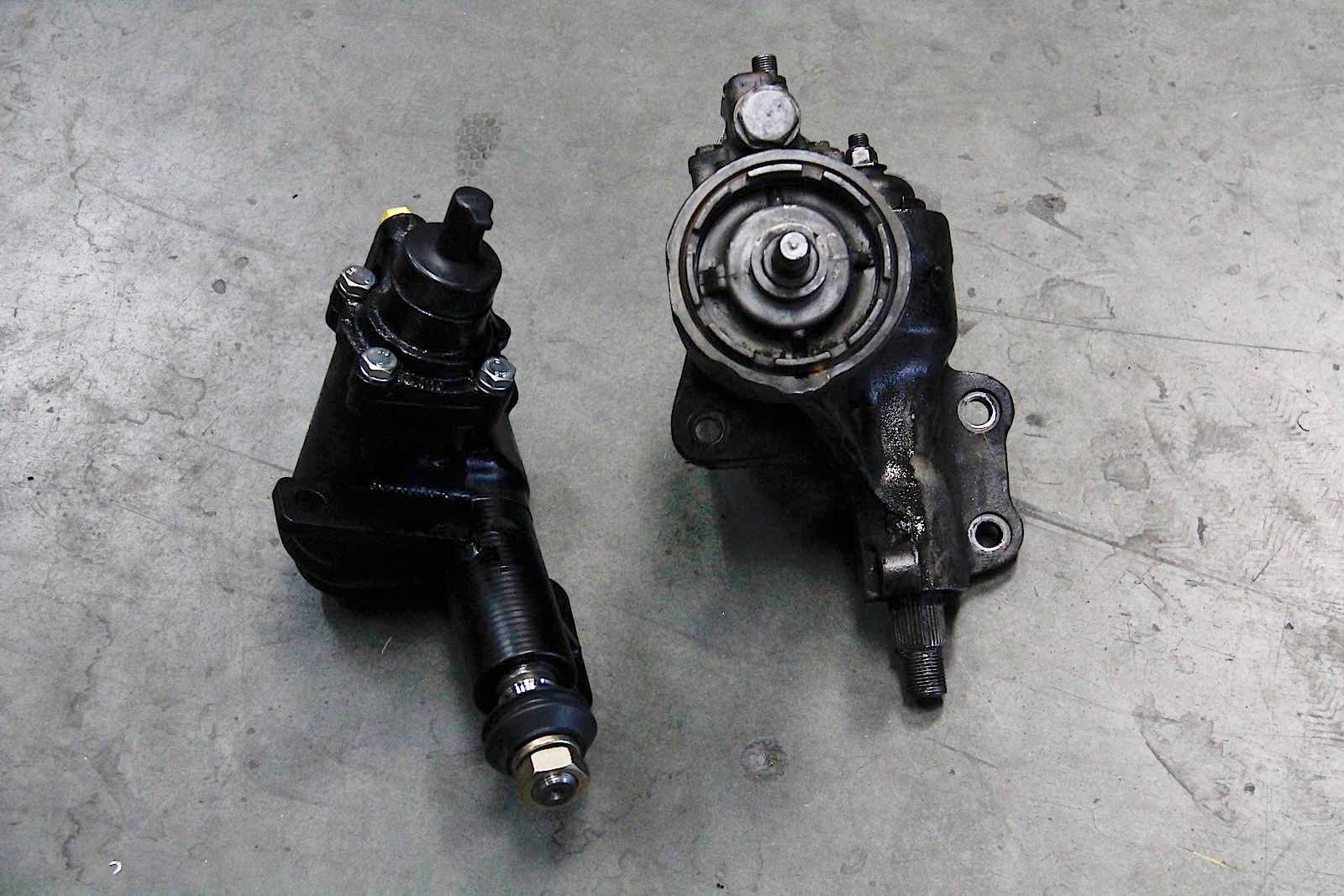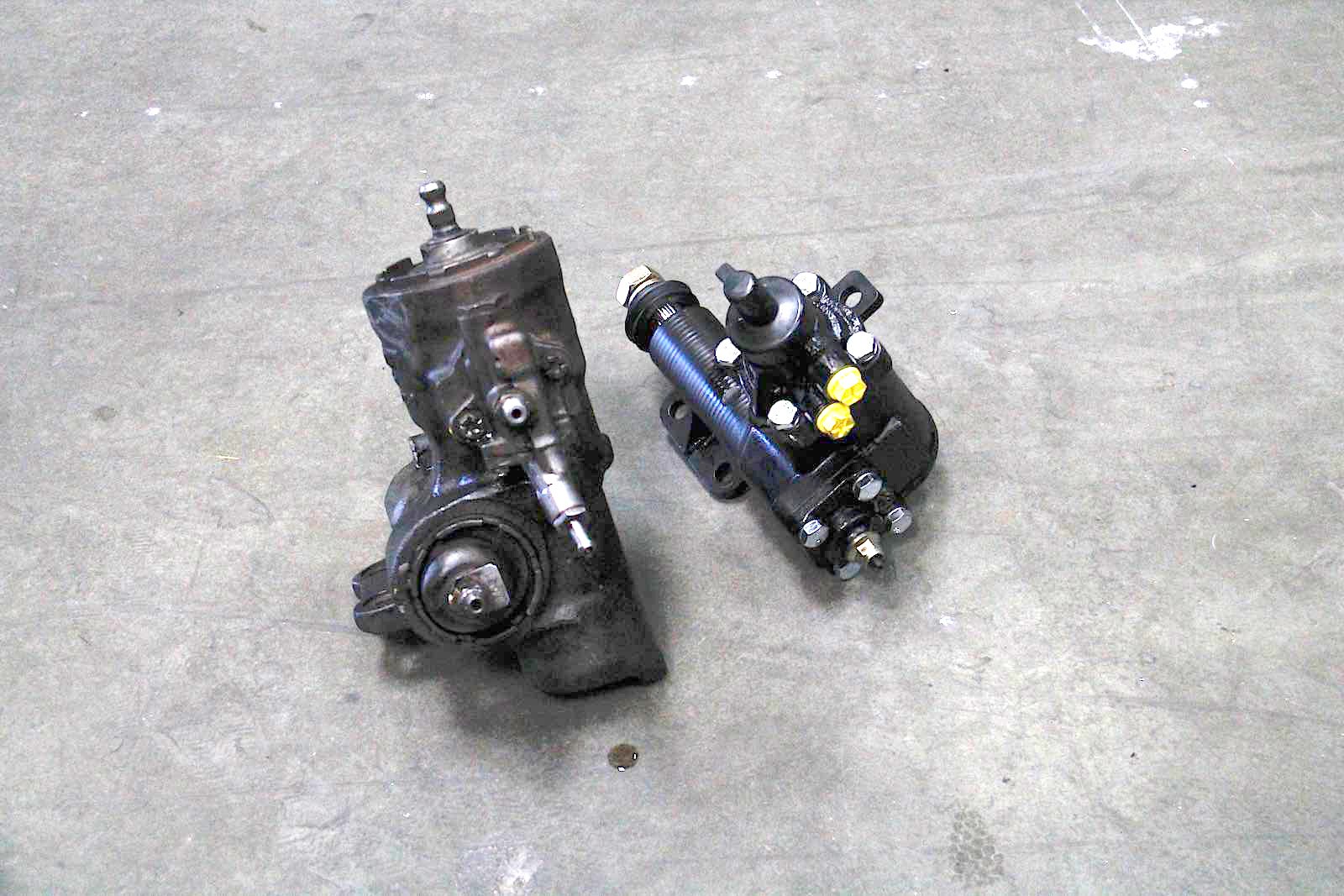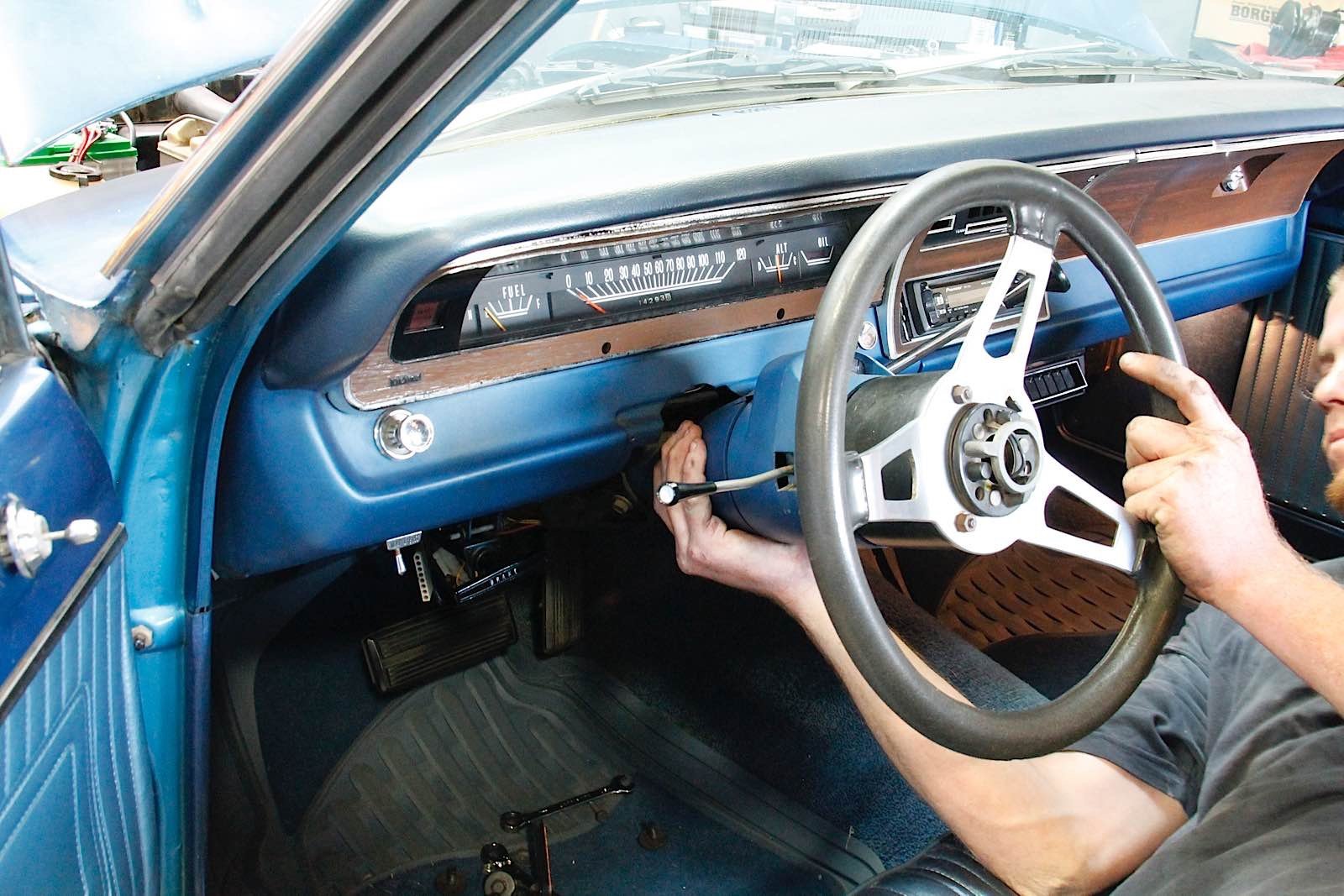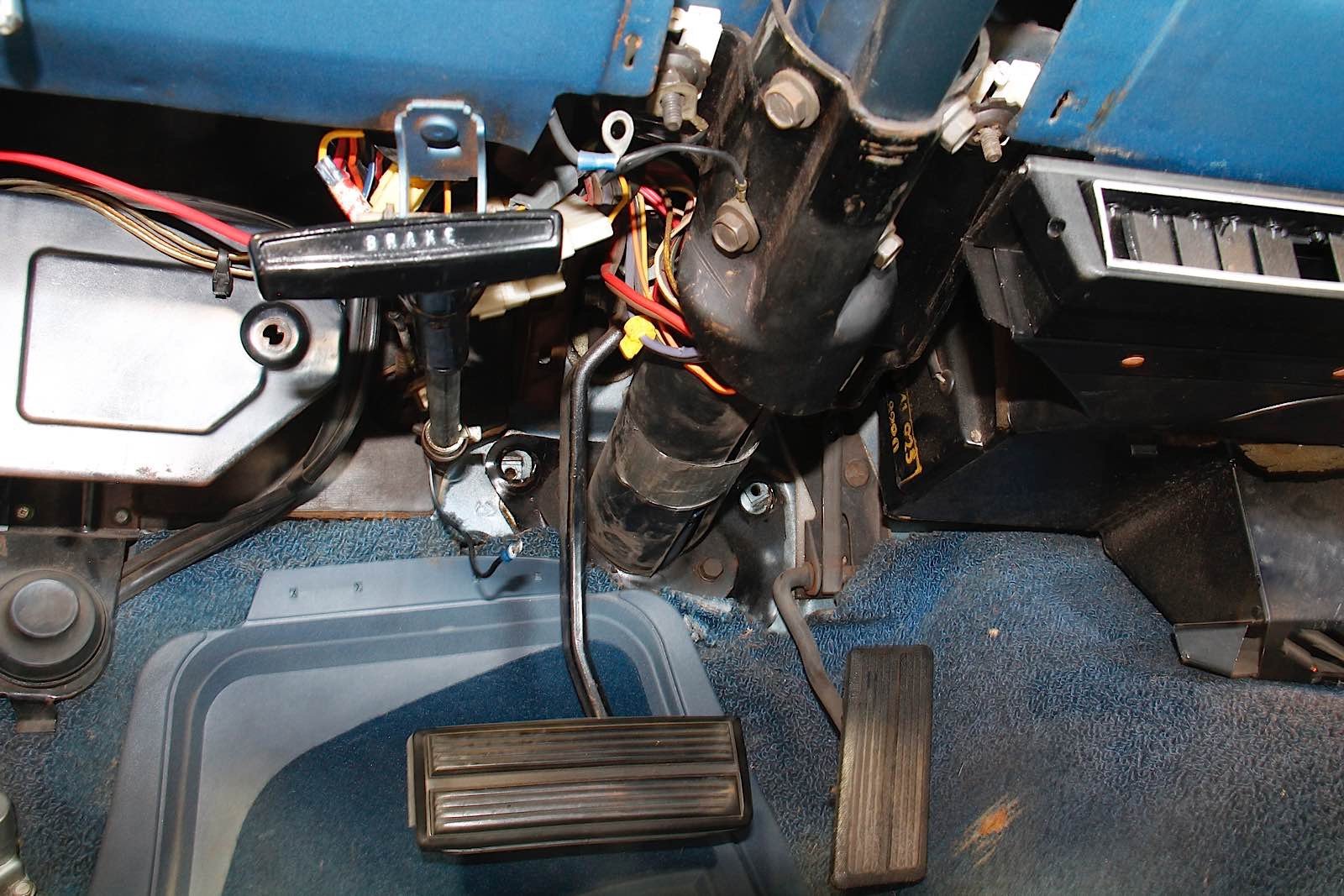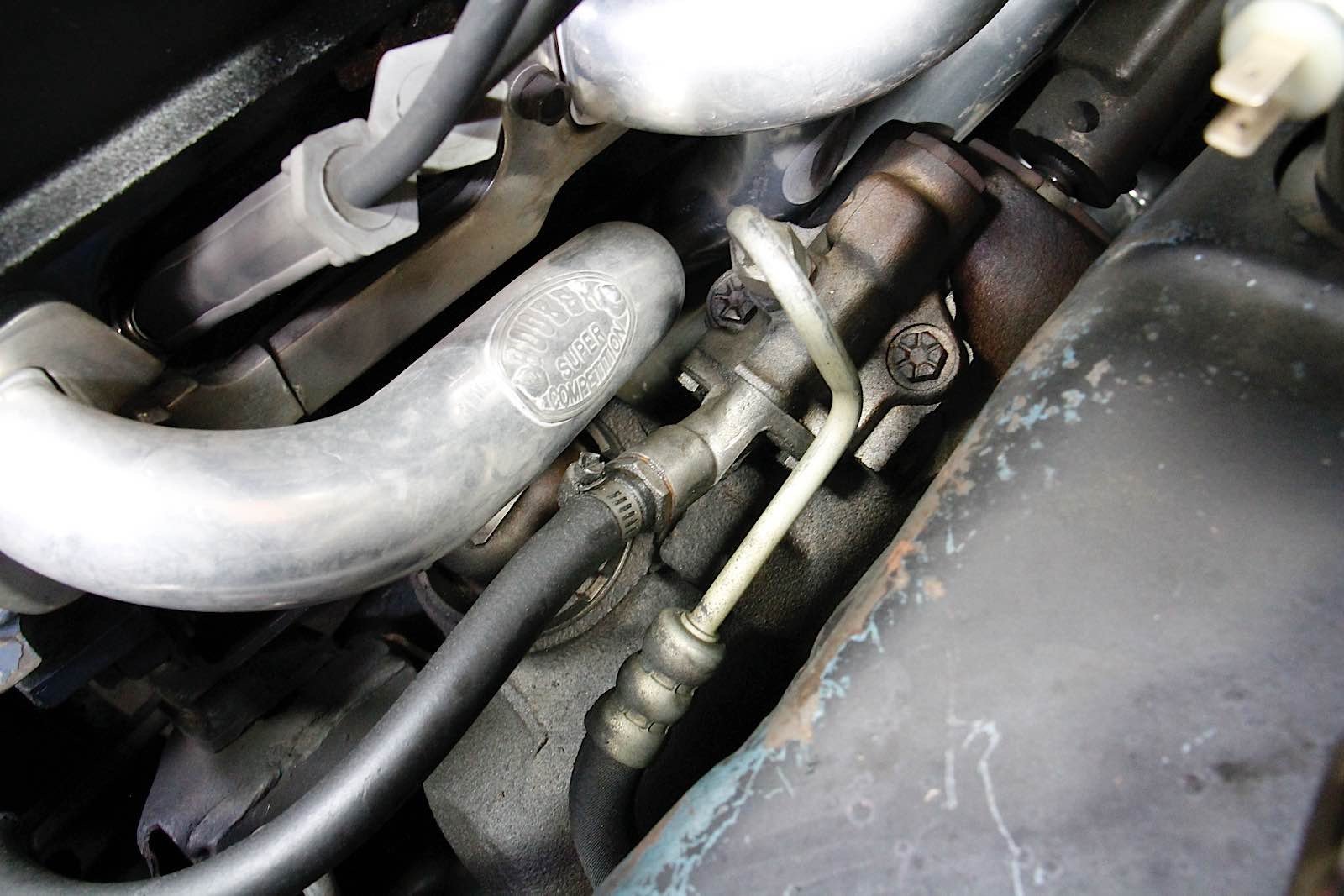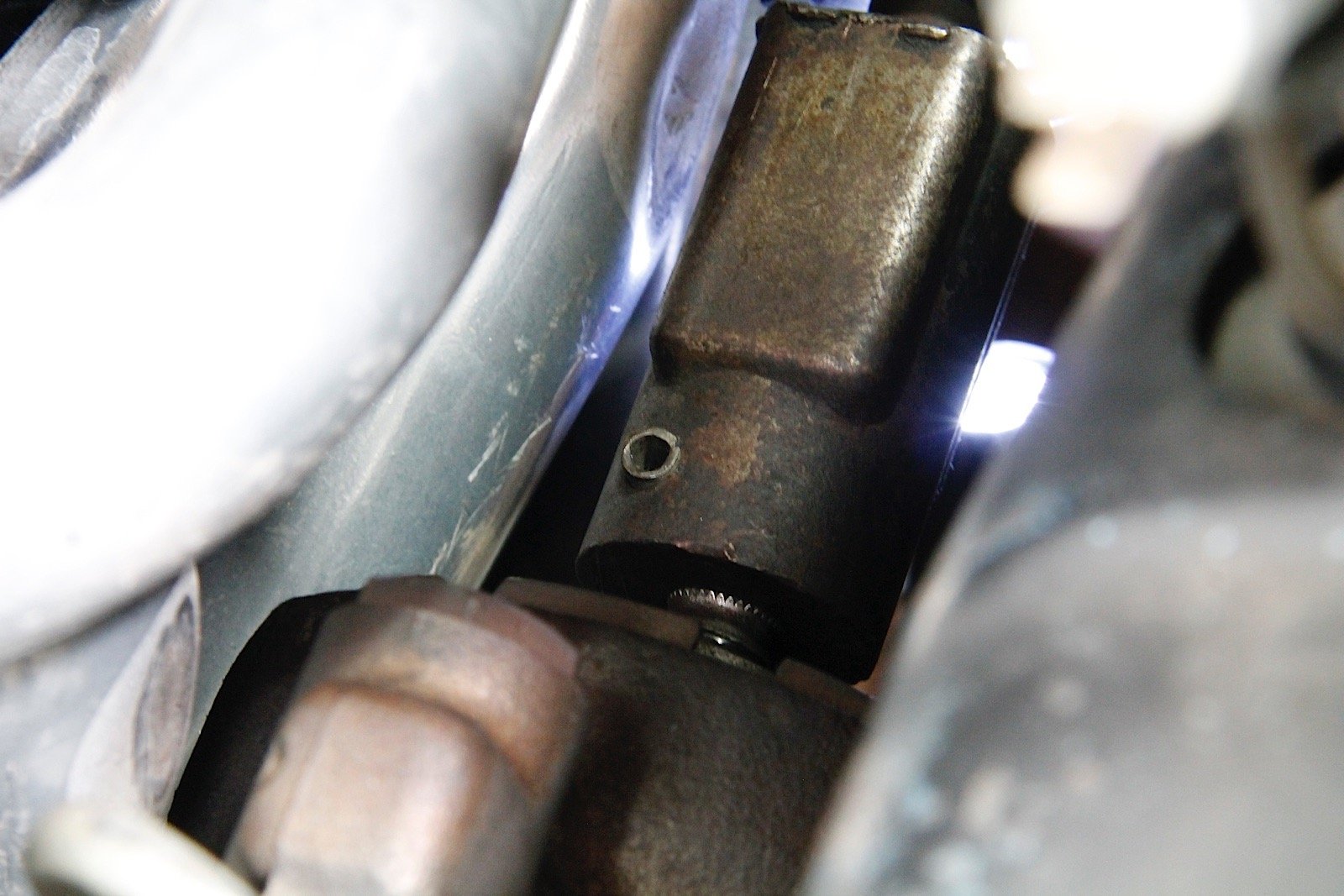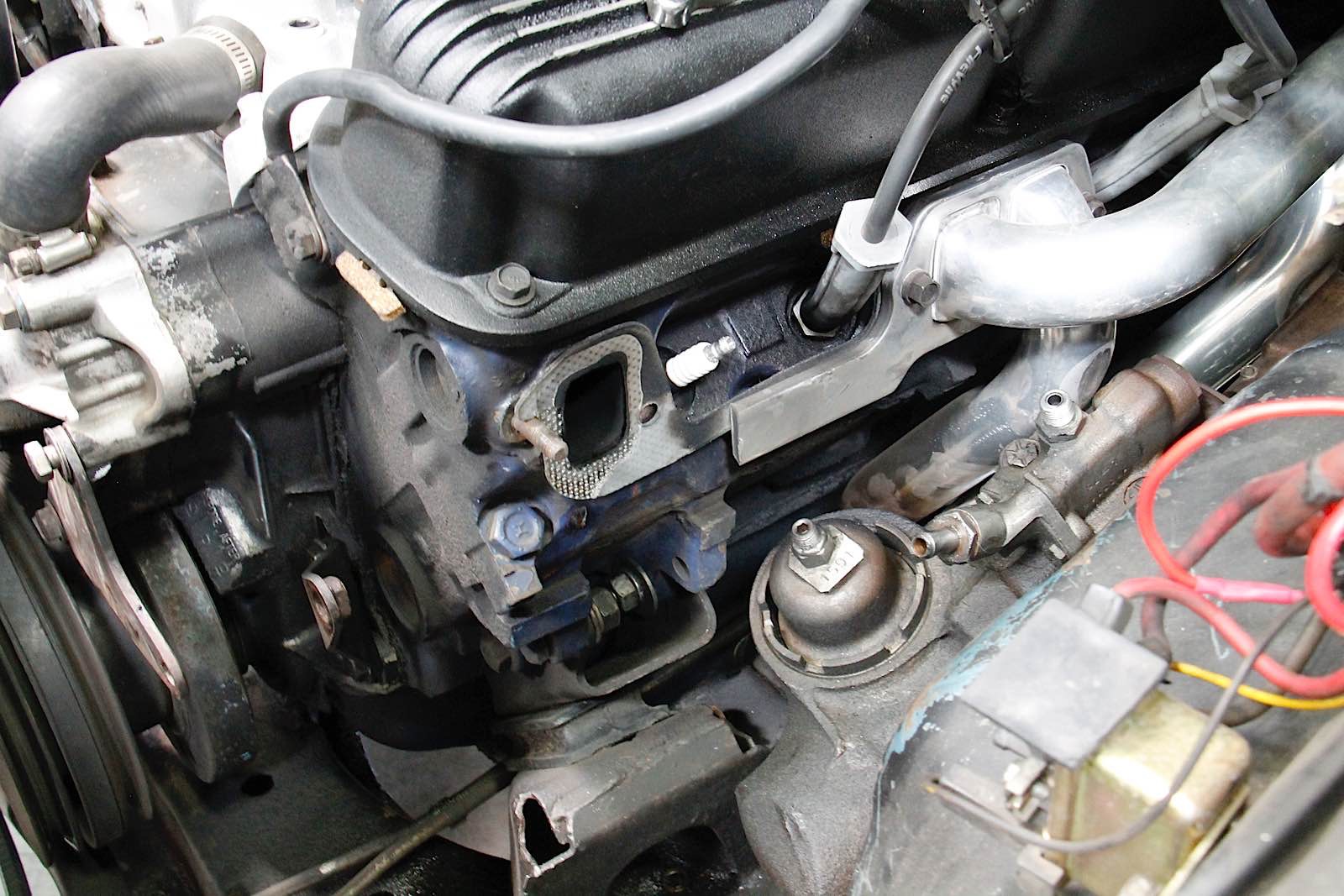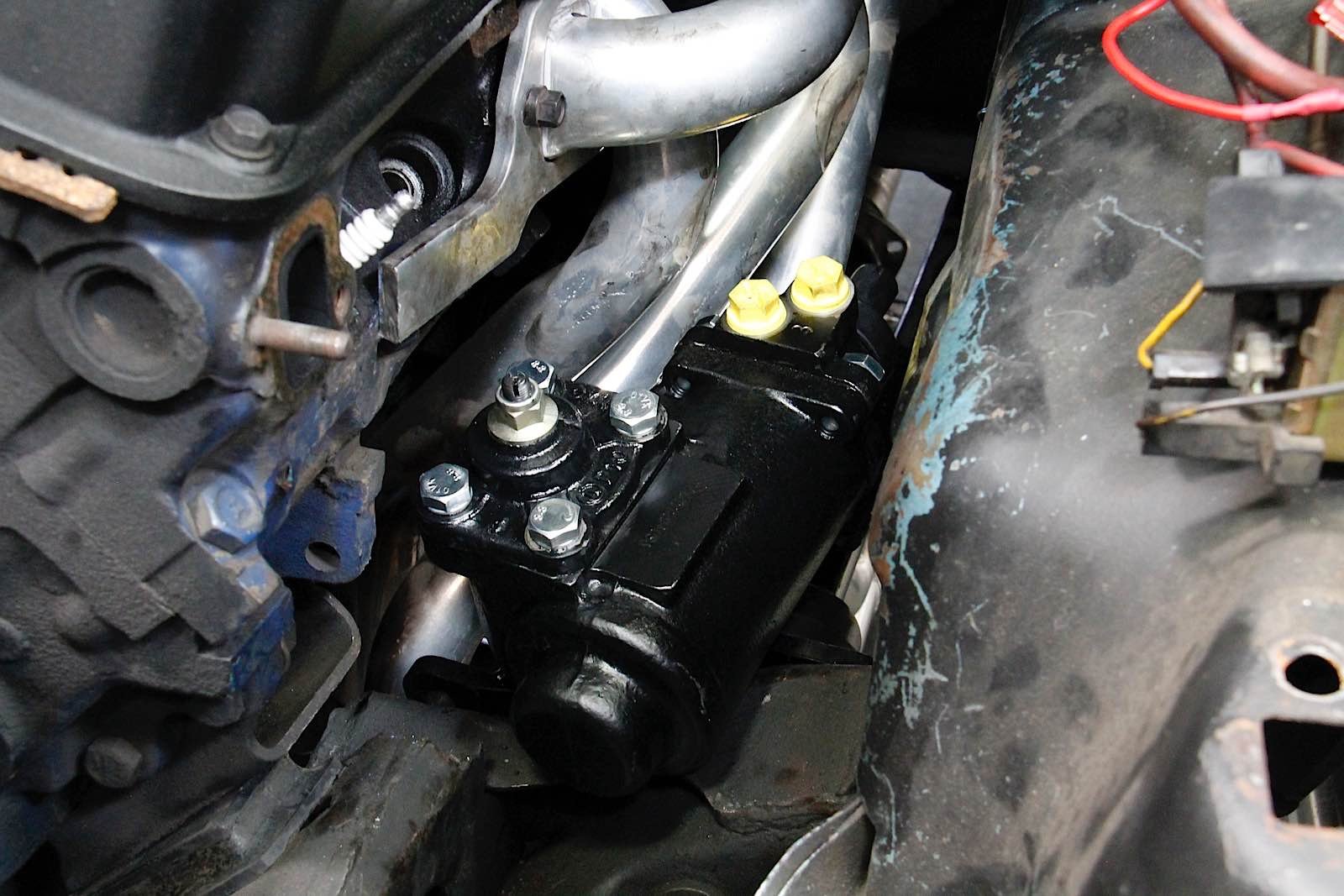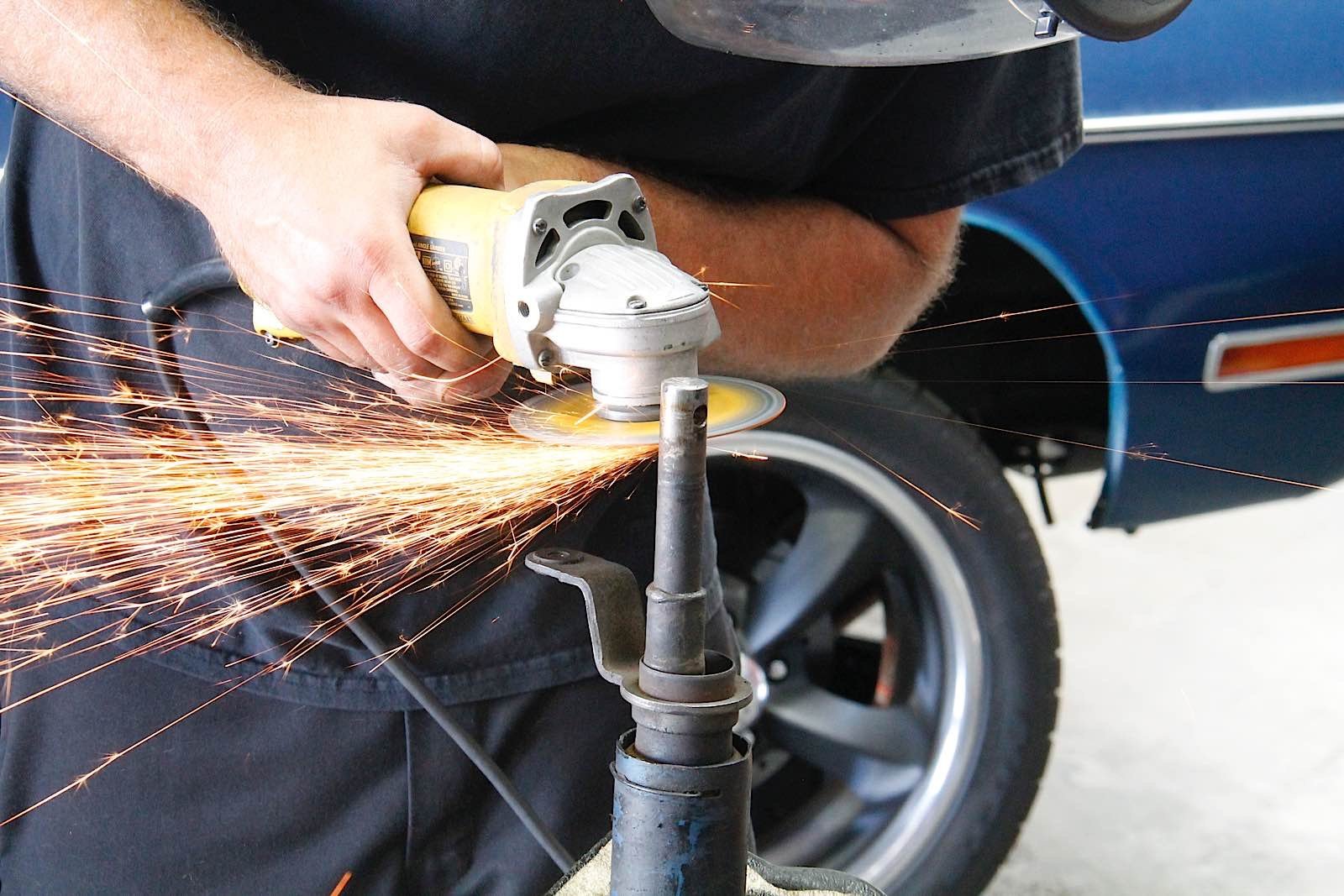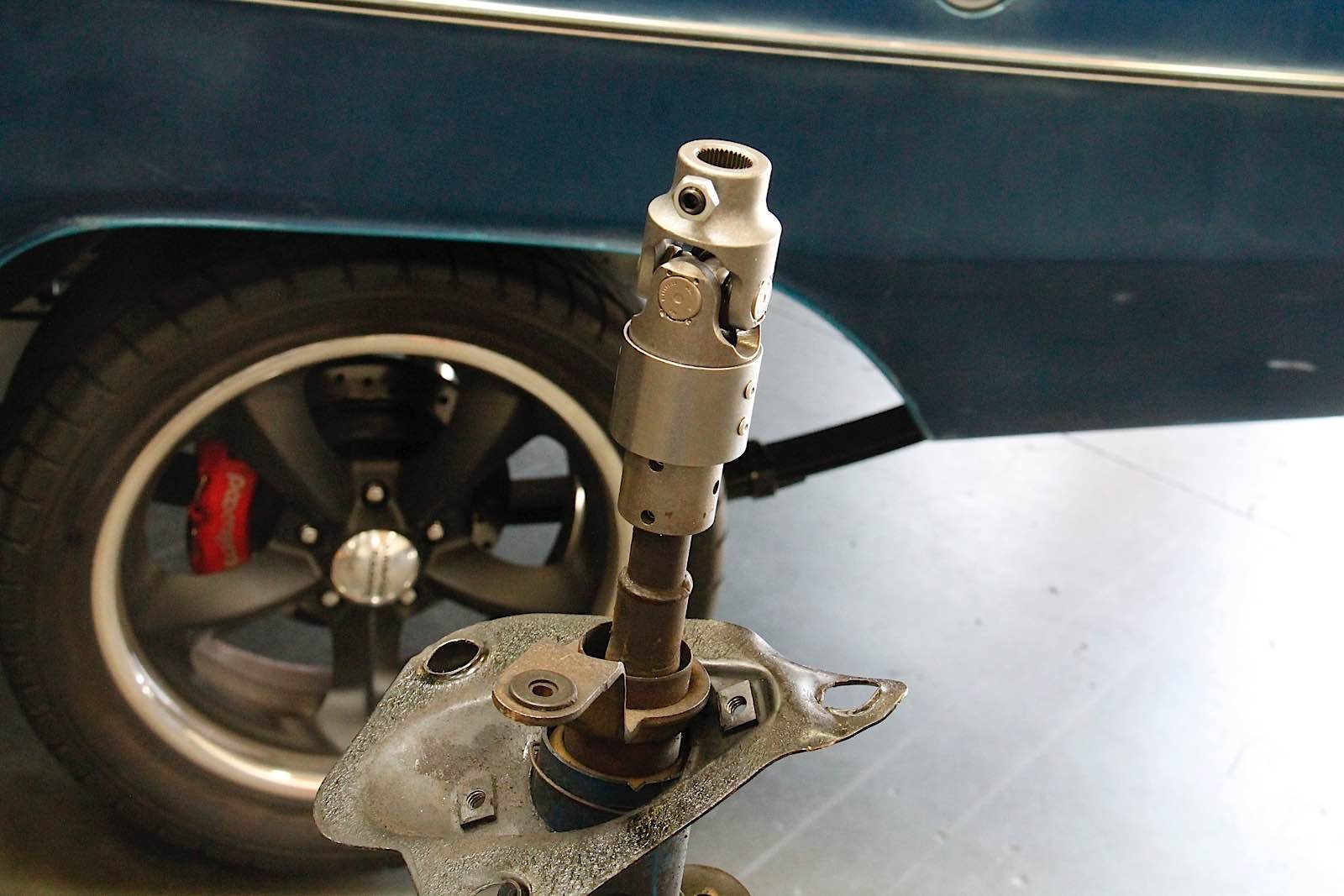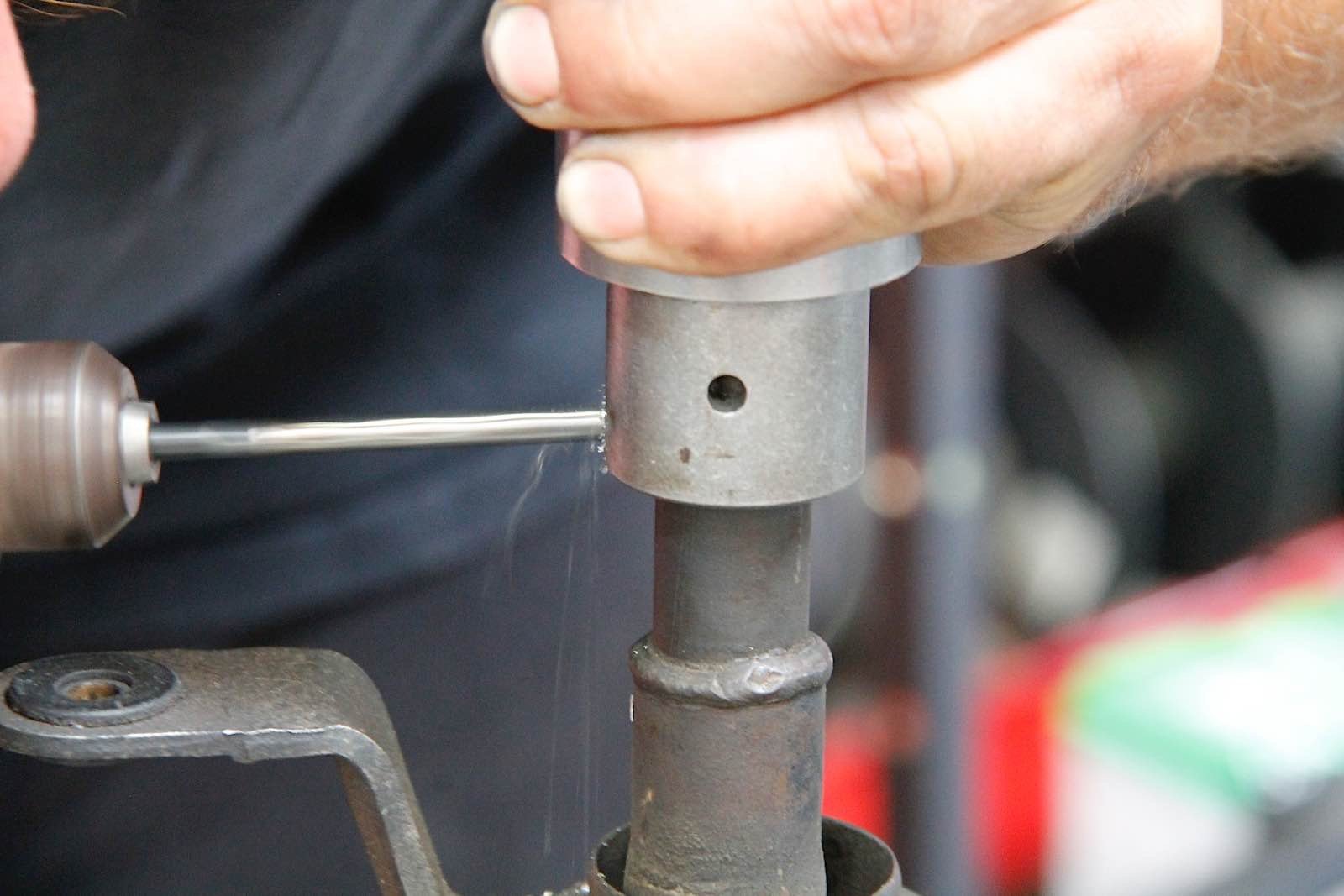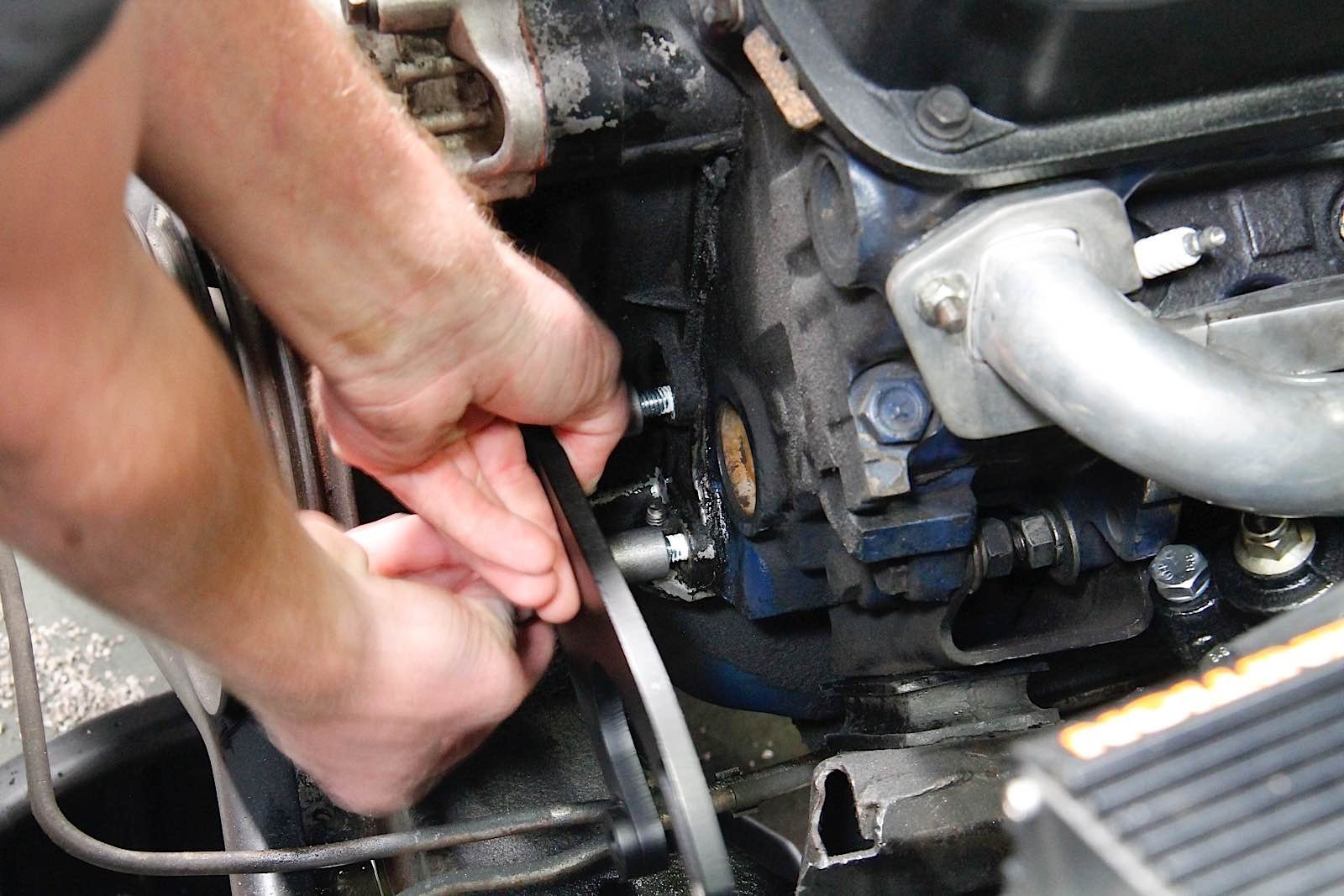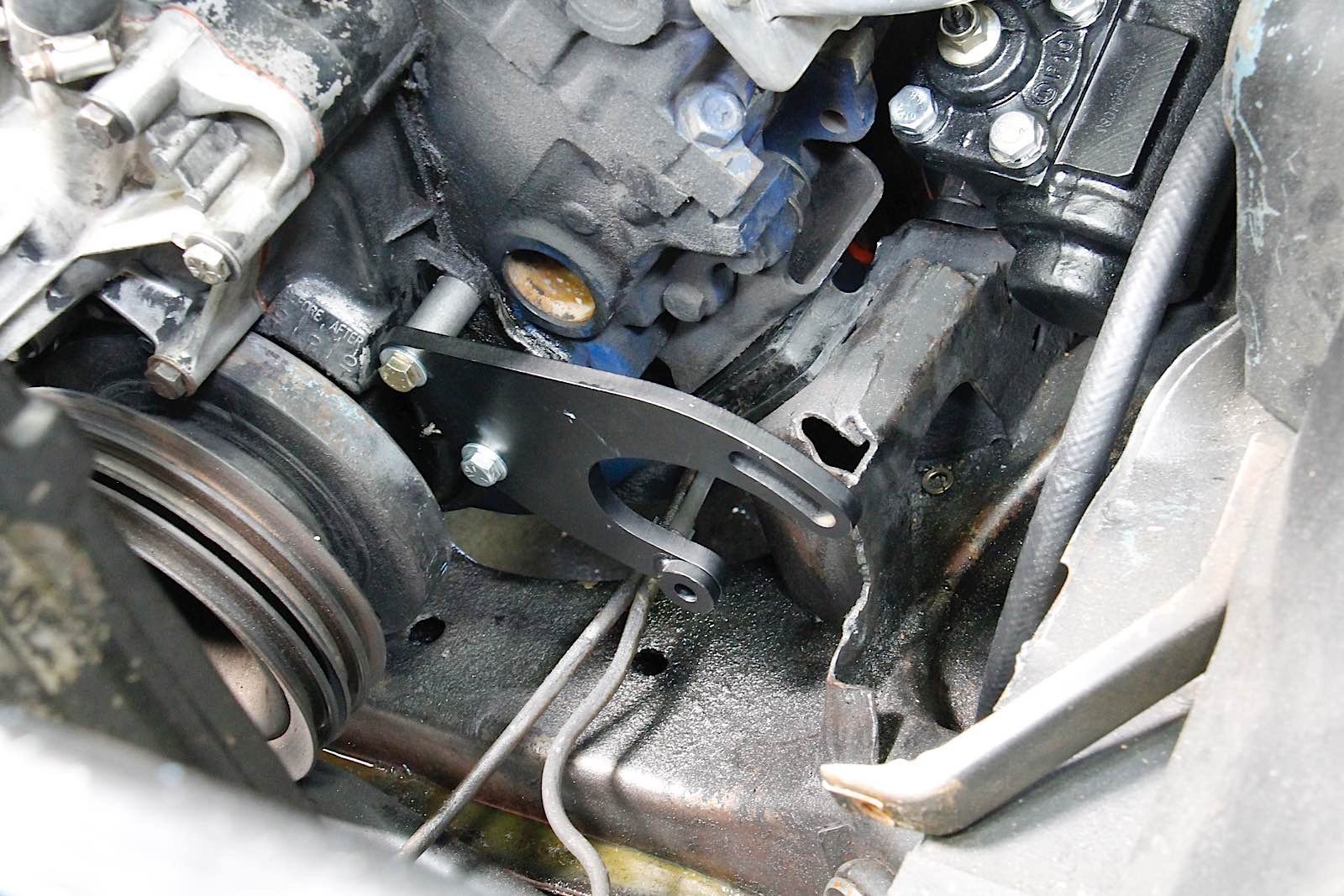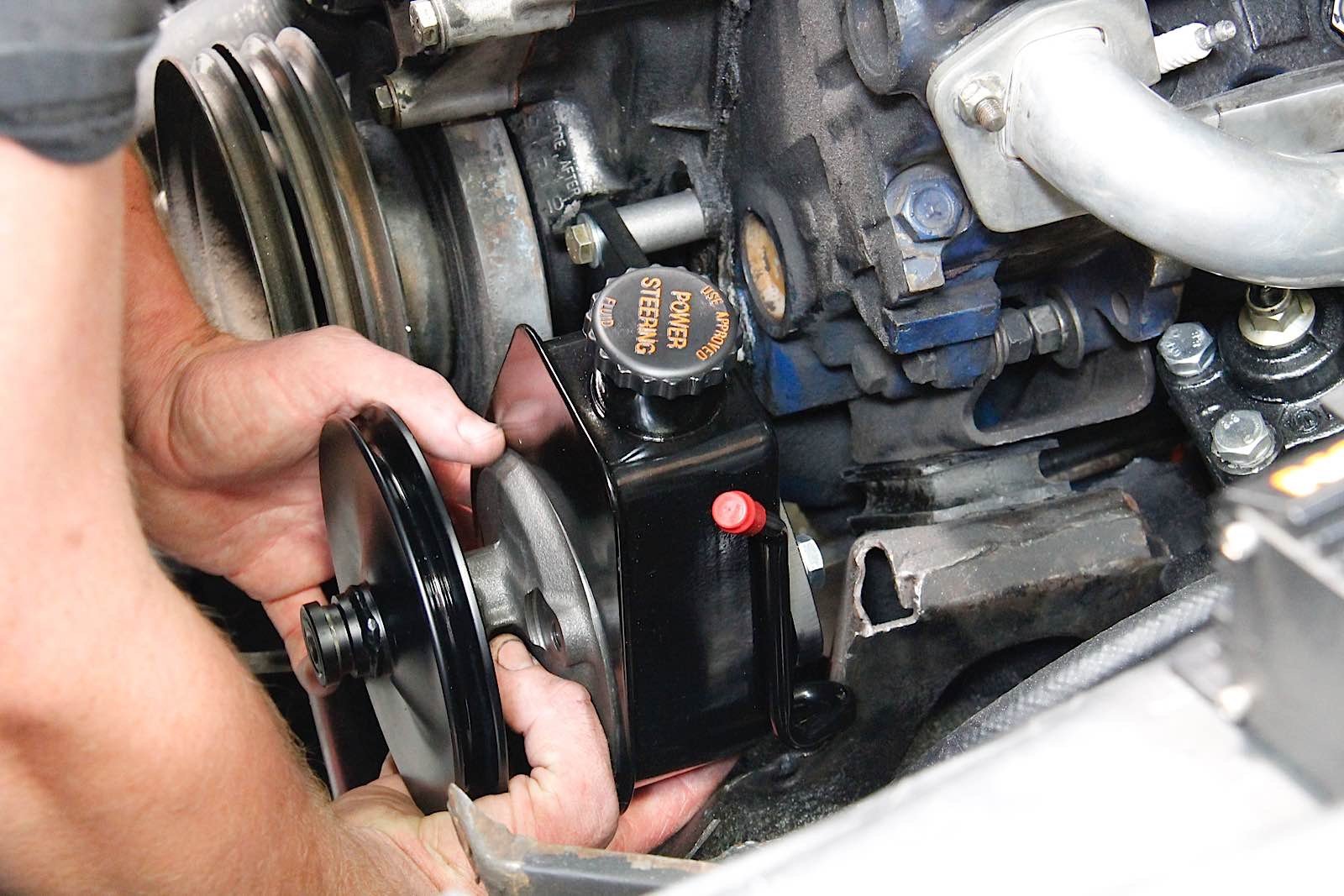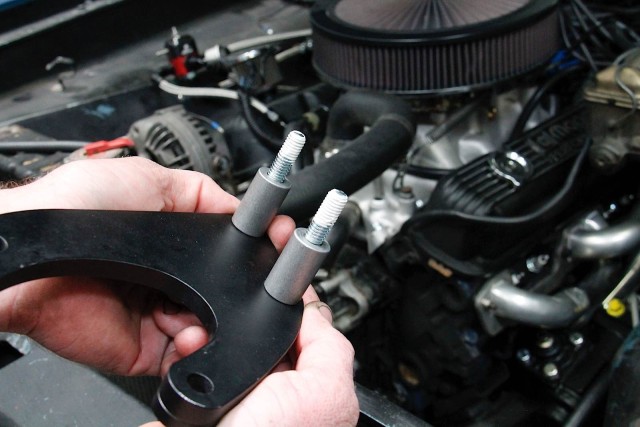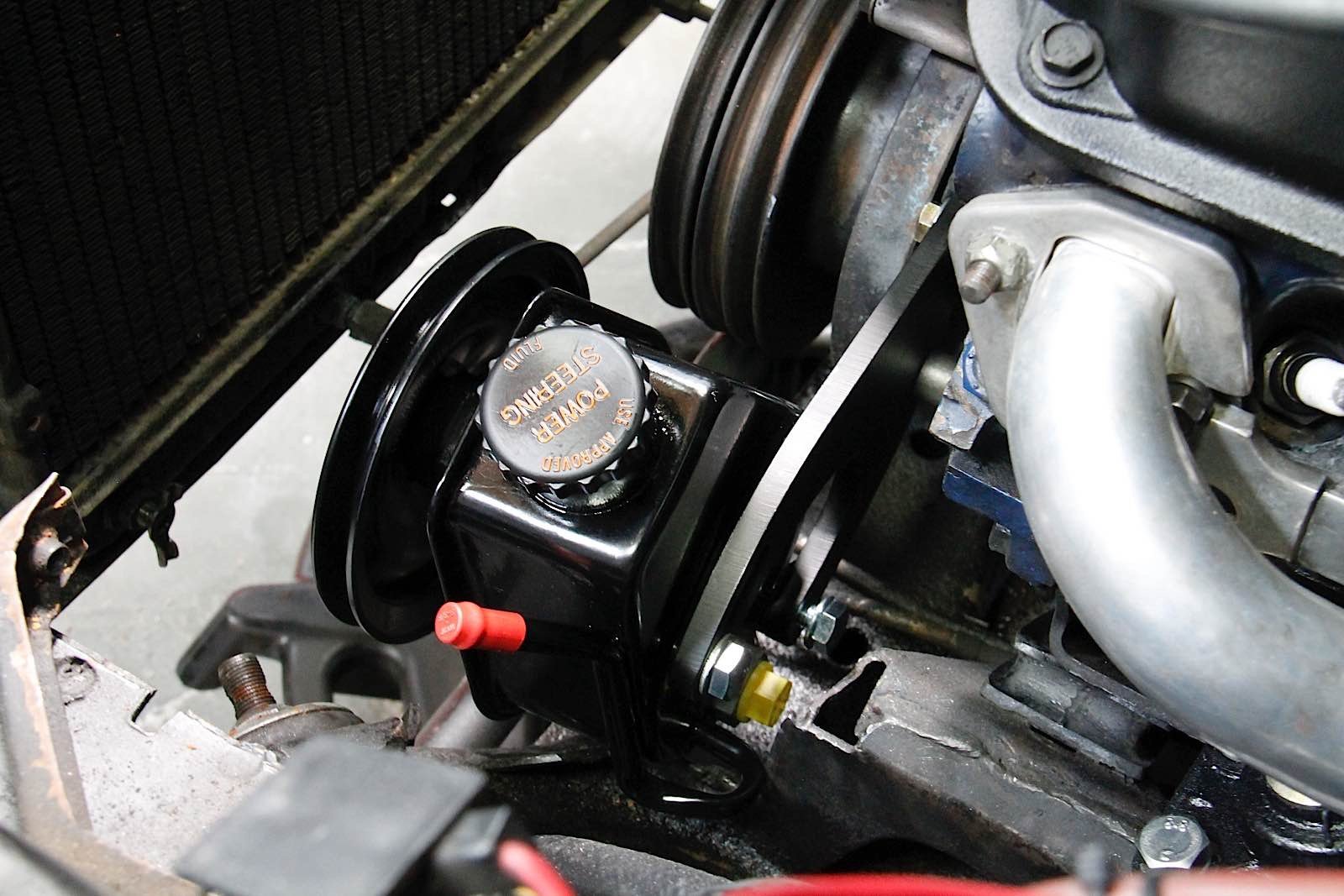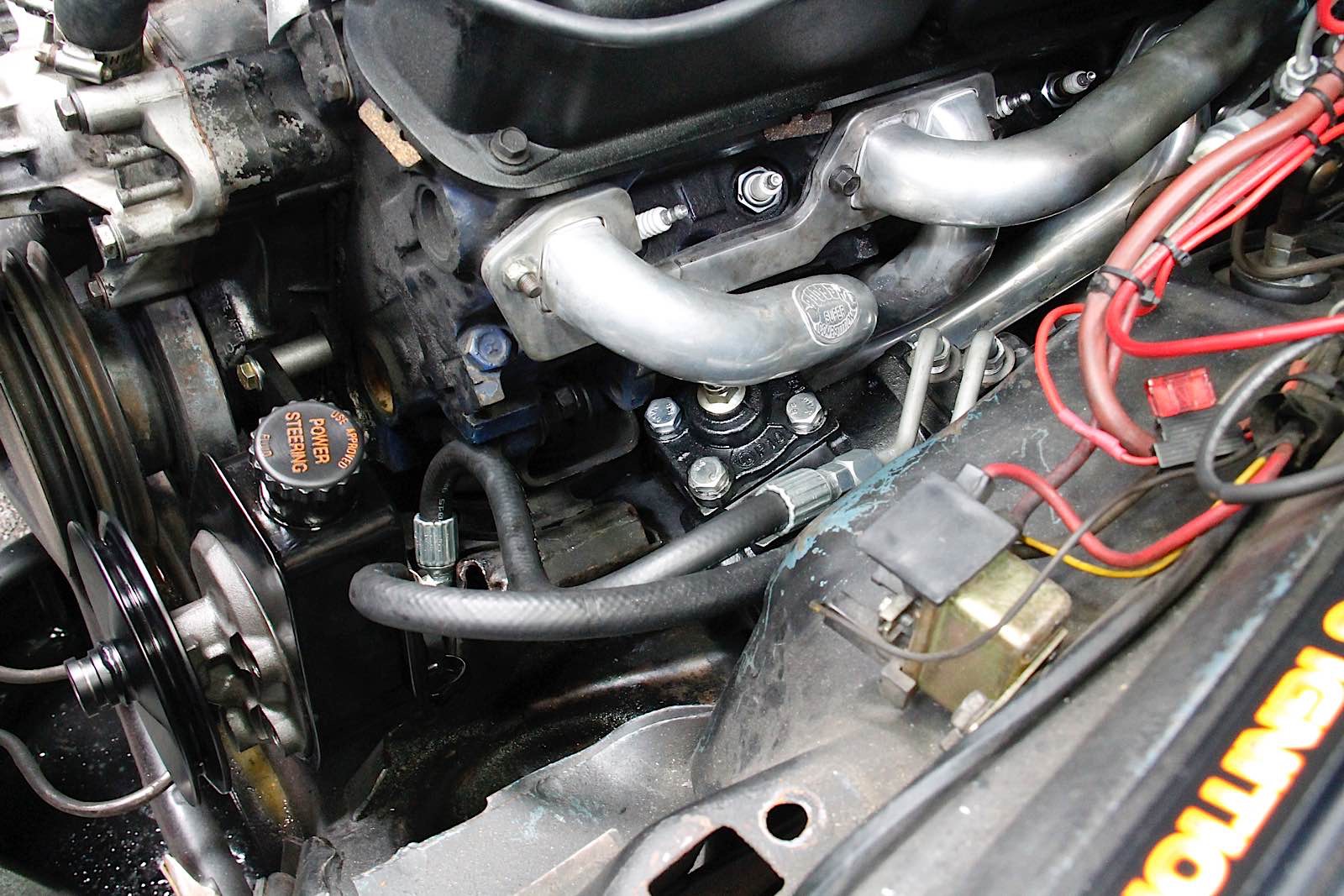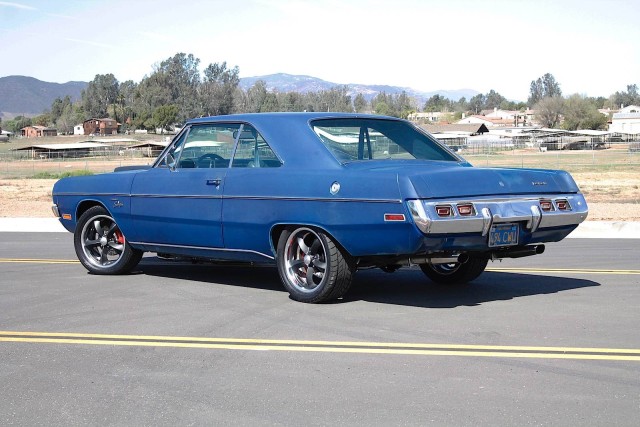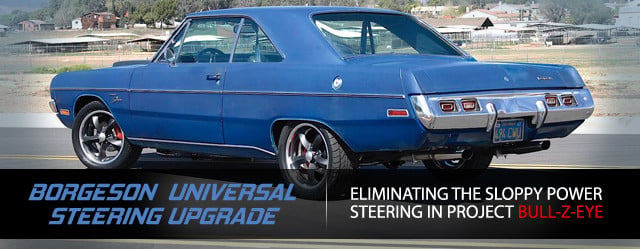 [1]Modern steering systems for many vehicles today include rack-and-pinion steering; it’s a vast improvement over the heavy steering box from decades past. While this improvement is great for modern vehicles it still leaves many classic cars in the dark ages when it comes to steering. A rack-and-pinion upgrade would be great, but often times that means a lot more than just replacing the steering box, and the cost to perform that upgrade can easily price you out of your budget.
[1]Modern steering systems for many vehicles today include rack-and-pinion steering; it’s a vast improvement over the heavy steering box from decades past. While this improvement is great for modern vehicles it still leaves many classic cars in the dark ages when it comes to steering. A rack-and-pinion upgrade would be great, but often times that means a lot more than just replacing the steering box, and the cost to perform that upgrade can easily price you out of your budget.
Finding a rebuilt unit is okay when your steering box decides to head south on you, but we’re reminded by our friend Jeff Grantmeyer at Borgeson Universal [3], “The problem with a rebuilt steering box from the 1960s and 1970s is that you still have an old steering box with old technology.” However, when you take a modern steering box and modify it to fit a classic car you can say goodbye to some of the problems associated with that 50-year-old technology.
If you’ve ever driven an older car and looked over your shoulder prior to changing lanes, chances are that by the time you looked forward again your car had wandered into the next lane a little. Lane wandering was typical with large, older cars that had feather-soft power steering boxes. Parallel parking a tuna boat C-body Mopar might be easier with that one-finger power steering, but out on the road a firmer steering feel provides much more confidence when navigating traffic at higher speeds.
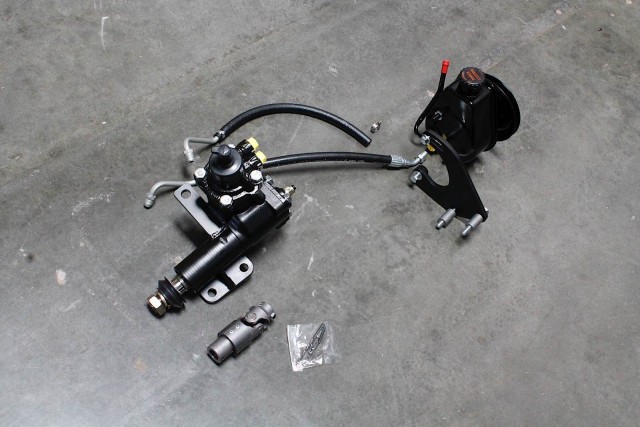 [4]
[4]Borgeson Universal now offers classic Mopar owners brand new steering components that provide better steering feel and response.
Borgeson: Steering Us In The Right Direction
We’ve installed a new Borgeson power steering box on a 1965 B-body [5] and we were surprised how much lighter and smaller it was compared to the factory unit. We were able to shave 13 pounds from the K-member, and it took up less space on top of that. The newer box was stronger and lighter, it provided a firm feel to the steering, and it seemed that everyone loved everything about it except the price. Coming in at just over 26 pounds, that weight loss is about one third of what the factory box weighs.
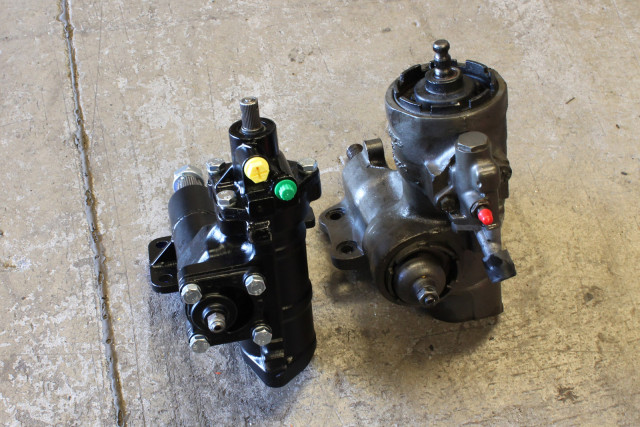 [6]
[6]On the left was the first Borgeson steering box we installed, it was a bit smaller than the stock box.
Grantmeyer told us, “The one thing that we kept hearing is that the new box was great, but it was too expensive. So we went back to the drawing board and came up with a better solution that saves the customer about $120 over the original steering box.” If there’s one thing that we’ve learned from Grantmeyer and Borgeson it is that they care about their customers, and they listen to them.
Fresh back from the drawing board is a new, less expensive box that is actually a little bit smaller than the last one. We wanted to check out this new box for ourselves, so we placed an order with Borgeson, and Grantmeyer told us about another new product that they have for Mopar owners that he was going to send to complement our new steering box. Borgeson has a complete power steering pump system to offer classic A-, B-, and E-body Mopar owners.
So we went back to the drawing board and came up with a better solution that saves the customer about $120 over the original steering box. -Jeff Grantmeyer
For this upgrade on a classic A-body Mopar, we’re yanking out the original steering box and the tired power steering pump to make room for brand new Borgeson components. This upgrade to Project Bull-Z-Eye [7], our 1971 Dodge Dart, will help bring us closer to our goal on this musclecar. Bull-Z-Eye has been going through some upgrades, including wheels and tires [8] and the suspension and rearend [9]. For a project car, we’re giving it the same treatment that many enthusiasts want for their own classic musclecar. We’ve done a couple of engine upgrades [10] as well, and most of what we’re doing is to prep the car for a new drivetrain, but that’s down the road a little.
The new Saginaw pump is a 1979 and later style with the press-on pulley, and is compatible with the original box, but was chosen to work best with Borgeson's new Mopar steering box.
New Power Steering Pump, Bracket, And Hoses
The Borgeson pump is a Saginaw unit, and it’s a brand new pump, not a rebuild. The older, Thompson and Federal pumps have become hard to find parts for, and swapping over to the rebuild-friendly Saginaw pump isn’t a simple process. Each pump had its own set of mounting brackets and adjusters, and swapping from one to another means finding the bracket and adjuster to fit that style of pump.
Borgeson also provides the proper pressure and return hoses for this new steering pump, as well as the mounting bracket, which they manufacture themselves. Grantmeyer said, “We have a water jet that we use here in our shop, and anytime we need a new bracket we just take the old one out and enter the measurements into the computer and make our own bracket. We were able to make a bracket for the Saginaw pump to mount to the small-block Mopar.”
Grantmeyer said they don’t currently have a kit for the entire steering system, but all parts are listed on their website and can be purchased individually. The entire steering system can be replaced with these four components without having to visit a wrecking yard for the proper brackets.
The new pump is designed for the later style small-block with the passenger-side water pump outlet. The early LA design had a cast iron pump with the outlet on the driver’s side, and this pump won’t fit without converting to the later design. That conversion includes a newer style water pump, timing cover, and crankshaft damper.
The newest Mopar steering box from Borgeson is a little smaller, and costs about $120 less than the prior steering box, making it much more affordable. Here it is next to the factory A-body steering box.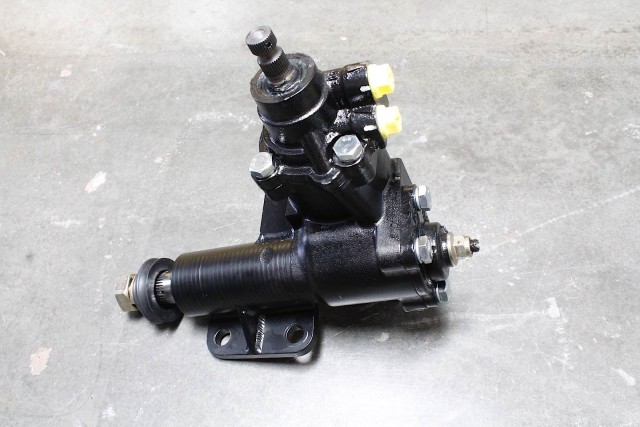 [14]
[14]
Installing The Steering Box
We removed the steering column and the coupler from the vehicle to access the factory steering box. As suspected, the box is too big to remove without removing the header and raising the engine slightly. We unbolted the engine mounts and the left-side header and used an engine hoist to raise the engine; it only needed to be raised a couple of inches to facilitate removal of the box.
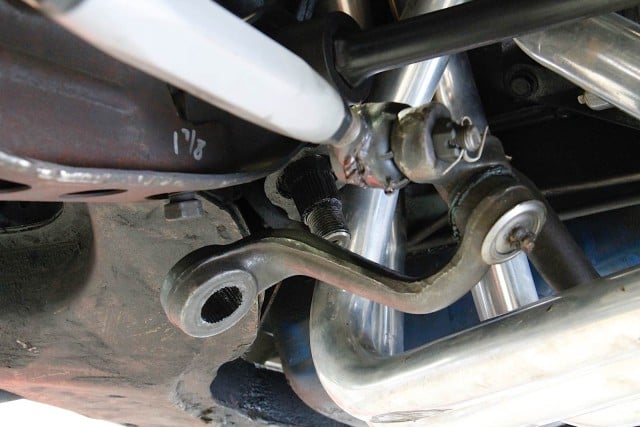 [18]
[18]The pitman arm needs to be detached from the box, but can remain attached to the steering linkage.
Prior to unbolting the box, we removed the pitman arm from the pitman shaft, and then removed the three bolts on the steering box. With the engine raised and the header pushed aside, we were able to remove the box from the top side of the K-member. It’s a heavy unit, and needed to be worked through the opening and out of the engine compartment. Since the A-body is a little tighter than the larger B-body cars, we left the engine raised to install the newer, smaller steering box. It installed much easier than the factory box and we noticed the housing itself is somewhat smaller than the first Borgeson box, which allowed it to fit perfectly.
We mounted the three bolts, and reconnected the pitman arm making sure to line it up with the notches in the resplined pitman shaft. The input shaft and pitman shaft are both machined by Borgeson for this application, and the steering box is offered in the 1 1/8-inch or 1 1/4-inch sector shaft, depending on the vehicle. We knew ahead of time that we had the smaller (earlier) pitman shaft, but the larger (later) design can be used if the pitman arm is exchanged. It’s best to measure the pitman shaft to make sure, unless a replacement pitman arm has already been located.
Top: Get used to removing the column a couple of times, it needs to be put back in place for a measurement, then removed again to cut the end of the steering shaft off.
Bottom: It's a tight fit, and removing the header provided more clearance. Raising the engine on the left side helped facilitate removal of the factory gear. The roll pin in the factory coupler needs to be pressed out to separate it from the input shaft.
When we installed our first Borgeson steering box, we contacted Bergman Auto Craft [24] for their Direct-Fit Steering Box Coupler [25]. The coupler kit was designed by Bergman specifically for this conversion, however, Borgeson also has a solution with one of its own universal joint couplers, which we decided to install in the Dart. The steering coupler (PN036425) is a precision-made coupler from Borgeson specifically for the Mopar steering shaft and the conversion steering box.
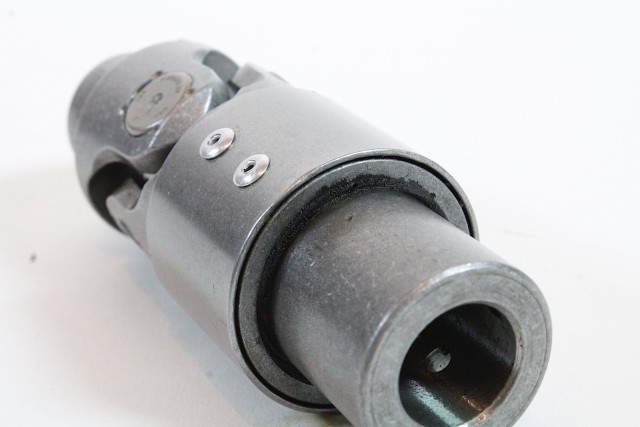 [26]
[26]A layer of vulcanized rubber helps insulate and absorb vibrations in the Borgeson steering coupler.
Mopar owners have shared concerns when utilizing this type of universal joint, citing that the steering column requires a coupler that can compensate for chassis flex. Grantmeyer showed us the coupler at the SEMA show last year and explained the coupler design to us. “There’s a layer of vulcanized rubber mounting the coupler housing to the mounting adapter, and that allows enough flex for this coupler to work on the classic Mopars,” he said.
In order to mount the coupler to the steering shaft, we first had to reinstall the steering column and measure the distance from the column flange to the firewall, with the coupler mounted to the steering box. This distance provides us the measurement to cut off of the end of the column. There is a cross pin in the column that must be removed, and this should not be done with a hammer as it tends to mushroom the pin making it near impossible to remove. We utilized a press to remove the pin, some may pop out easier than others so be prepared to hit a machine shop for this next part of the install.
The steering column is inserted and removed a couple of times so that a measurement can be taken. The end of the steering shaft needs to be cut off, and the new coupler is installed.
With the pin removed, we used a cutoff wheel and removed the half inch from the column end to accommodate the new Borgeson coupler. Again, the column and coupler were installed, and with the steering column lined up properly we marked the end of the column to drill three holes into the shaft. The coupler is held in place by three roll pins provided by Borgeson; a correct-size drill bit is also included with the kit.
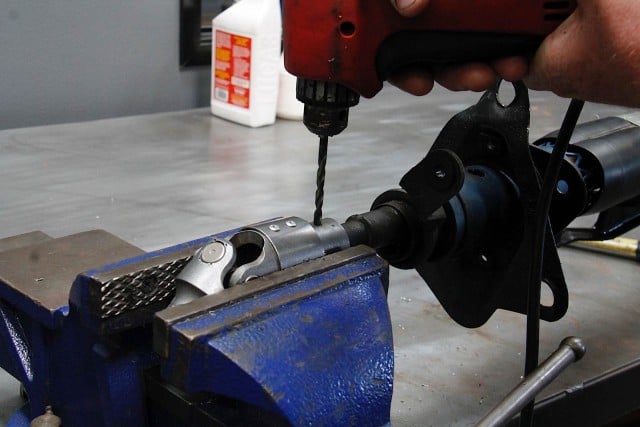 [33]
[33]Once the first hole is drilled, the roll pin is inserted and the remaining two holes are drilled.
Once we made our initial markings on the shaft, we put the column into a vise, and with the shaft inserted into the coupler we drilled the first hole and inserted the role pin. The remaining two holes were drilled and the roll pins inserted, and our column was ready to be installed for the last time, and bolted completely into place. It should be noted that the steering should not be moved during this conversion; and while the alignment shouldn’t have moved any with this install, it couldn’t hurt to check the alignment again just to be sure. Many shops will advise that any time a steering component is replaced the alignment should be checked.
Top: We found that mounting the pump bracket first made it easier, as there's not much room.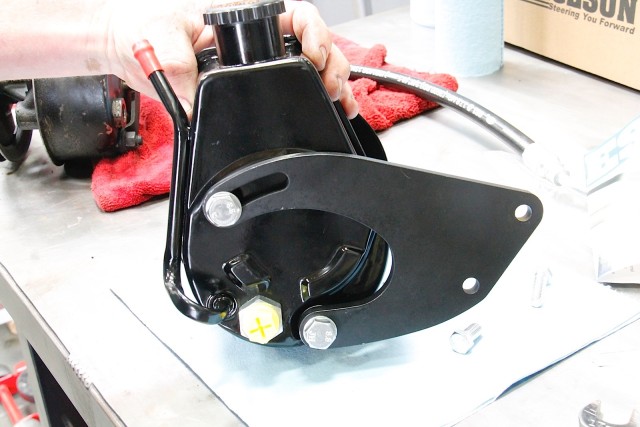 [34]
[34]
Bottom: This is the proper way to mount the pump bracket (pump removed for clarity).
Installing The Saginaw Pump
With our small-block Dart, there was an aftermarket mounting bracket and support for the alternator, so it changed the arrangement of the drive belts and pulleys. A typical setup for the LA engine series is for the alternator belt to share the water pump pulley and the crankshaft pulley, while the power steering pump is driven by the crank pulley only. Even though our small-block had a custom, aftermarket alternator setup, we were able to get a belt to operate the water pump and power steering pump and everything still lined up properly.
We drained the radiator a bit to get the water level down so that we could remove two bolts on the front cover. These bolts enter a water jacket, so expect some coolant to flow out when the bolts are removed. The new bracket replaces the original pump brackets, regardless of what style your car has. If you don’t currently have power steering, this pump can be added to your small-block along with the new power steering box to convert to power steering.
When installing the new bracket, we added thread sealer to the two mounting bolts that come with the bracket. We also found that mounting the bracket to the pump first made it easier to install the pump, as there is limited space behind the pump. We were able to install both hoses after the pump was installed. Because there are a few different belt setups for the LA, a new belt is not included with the kit. We took a measurement using the old belt and bought a new one from the local parts store.
The two hoses will have a right angle fitting, but each hose will only fit in one spot on the back of the pump. Be sure to mount the pressure hose into the proper port on the steering box, by referencing the instructions included with the kit. The power steering fluid that we’ve found works very well with this Borgeson conversion is Lucas [39] power steering fluid with conditioners. This will handle the heat a little better than conventional fluid, and reduces the bubbling when the temperatures are higher.
With the new steering box and pump installed, the hoses are connected. There's a little bit more room around the steering box now.
To fill the new pump and steering box, the car should be raised and the pump filled up. Turn the wheels from side to side about three times, and then check the pump and add more fluid if necessary. Start the engine, and repeat the process with the engine running, having more power steering fluid ready to add. After a couple of cycles, the steering system should be properly filled and the car is ready to drive.
Driving Impressions
Our Dart is currently used as a daily driver and occasional weekend car. The owner was used to the soft steering and the initial concern was that the steering would be too firm. While it’s true that the new system provides a firmer feel, it didn’t take long for the owner to forget what the steering used to feel like and get used to the new, firmer steering. We asked about lane wandering and he admitted that he noticed it before the conversion. With the new components, the car doesn’t wander when he looks over his shoulder and he actually likes the new feel to it.
The steering is more noticeable when parking; the car has wider tires and he does notice that it takes a little more effort at idle when parking the car. The 14:1 ratio is a little better than the factory box at 16:1, providing a quicker response. But the difference that he feels on the road, and on the freeway, is much more preferred than the way it used to be. He told us, “It feels more like a real musclecar now, it doesn’t feel like I’m driving my grandmother’s Buick anymore.”
If you’ve been ready to ditch the bulky factory steering box and replace it with something modern, using current technology and providing a firm feel to the steering, the new Borgeson steering box and steering pumps will fit A- B-, and E-body Mopars. You can expect the installation to take about a day or two, and all of these components fit the classic Mopar chassis. We’ve also installed a Mustang power steering conversion [44] as well as a variable ratio steering box [45] for classic GM vehicles. All of these parts can be found on the Borgeson Universal website [3], for various Ford, GM, and Mopar vehicles, including some full-size trucks.
